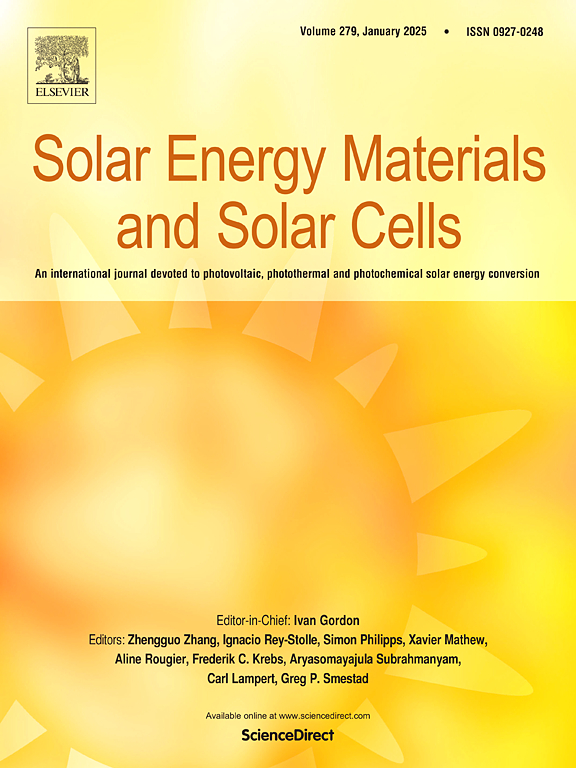Enhancing phase change energy storage efficiency: Performance optimization of Fibonacci fractal fins under fluctuating heat source
IF 6.3
2区 材料科学
Q2 ENERGY & FUELS
引用次数: 0
Abstract
Solar power, though an essential renewable energy source, suffers from intermittency and fluctuations, leading to reduced efficiency in thermal storage systems. This research examines an enhanced three-tube latent heat storage system (TES) incorporating Fibonacci fractal tree-shaped fins, an innovative design developed to optimize heat transfer performance. The results reveal that increasing the fin branching angle significantly improves heat transfer efficiency within the TES system. Furthermore, both the period and amplitude of sinusoidal fluctuating heat sources exert considerable influence on phase change material (PCM) temperature distribution and thermal storage capacity. Through multi-objective optimization employing the non-dominated sorting genetic algorithm (NSGA-II) algorithm, the study determines an optimal system configuration achieving a melting time of 151.18 s and thermal storage capacity of 576.32 kJ. The optimized parameters consist of a 109.99-s sinusoidal period, 12.50 K amplitude, and 102.07°branching angle. The key innovation of this study resides in the synergistic integration of bio-inspired fractal fin structures with advanced multi-objective optimization algorithms, which establishes a novel approach for addressing intermittency challenges in solar thermal energy storage systems.
提高相变储能效率:波动热源下斐波那契分形翅片性能优化
太阳能虽然是一种重要的可再生能源,但它存在间歇性和波动性,导致储热系统的效率降低。本研究研究了一种增强型三管潜热存储系统(TES),该系统结合了斐波那契分形树状鳍,这是一种用于优化传热性能的创新设计。结果表明,增加翅片分支角度可以显著提高TES系统内的换热效率。此外,正弦波动热源的周期和振幅对相变材料(PCM)的温度分布和蓄热能力都有相当大的影响。采用非支配排序遗传算法(non- dominant sorting genetic algorithm, NSGA-II)进行多目标优化,确定了熔解时间为151.18 s、蓄热容量为576.32 kJ的最优系统配置。优化后的参数为正弦周期109.99 s,振幅12.50 K,分支角102.07°。本研究的关键创新在于将生物分形翅片结构与先进的多目标优化算法协同集成,为解决太阳能热储能系统的间歇性挑战建立了一种新的方法。
本文章由计算机程序翻译,如有差异,请以英文原文为准。
求助全文
约1分钟内获得全文
求助全文
来源期刊

Solar Energy Materials and Solar Cells
工程技术-材料科学:综合
CiteScore
12.60
自引率
11.60%
发文量
513
审稿时长
47 days
期刊介绍:
Solar Energy Materials & Solar Cells is intended as a vehicle for the dissemination of research results on materials science and technology related to photovoltaic, photothermal and photoelectrochemical solar energy conversion. Materials science is taken in the broadest possible sense and encompasses physics, chemistry, optics, materials fabrication and analysis for all types of materials.
 求助内容:
求助内容: 应助结果提醒方式:
应助结果提醒方式:


